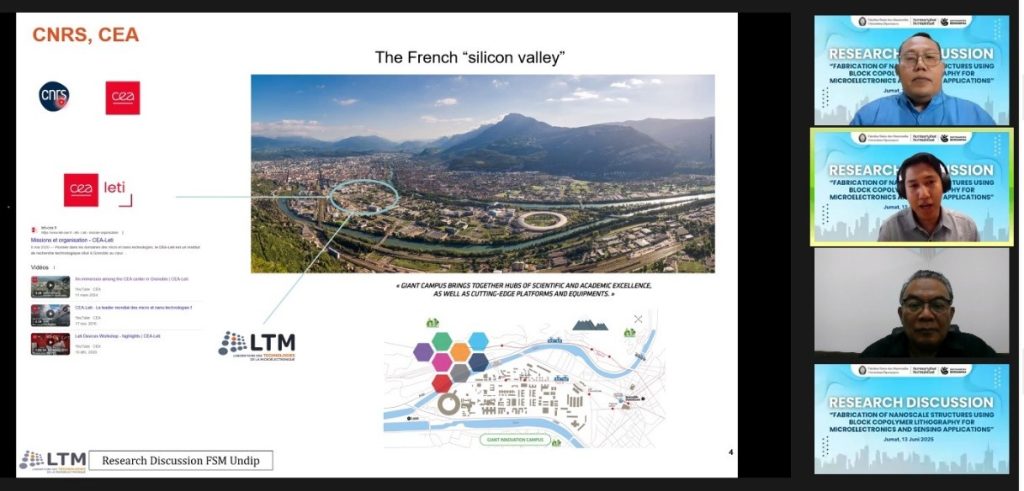The focus of the presentation in the seminar revolves around investigating the DSA of a high-χ lamellar Si-containing material, polystyrene -block- poly(1,1-dimethylsilacyclobutane) (PS-b-PDMSB) with a 9 nm half-pitch, on topographic substrates for BCP lithography (a so-called graphoepitaxy process), with the ultimate goal of addressing applications in microelectronics and surface-enhanced Raman spectroscopy (SERS).
Achieving high-resolution nanostructures at sub-10 nm scale is paramount for technological advancements, especially in the field of microelectronics, where the continuous reduction in transistor size plays a crucial role, but also in other fields like photonics for the fabrication of metasurfaces or in the field of bio/chemical sensors, for example. In this context, the directed self-assembly (DSA) of high-χ block copolymers (BCPs) is a promising nanofabrication technique. A higher value of the Flory-Huggins parameter χ, measuring the chemical incompatibility between the blocks, enables the formation of higher resolution features (sub-10 nm).

To attain a lithography-compatible configuration, i.e., long-range ordered out-ofplane lamellae, precise control of the wetting interaction between the BCP and its environment (e.g., substrate’s bottom and sidewalls, as well as polymeric top-coat) is required. In the first part of the work, Dr. Putranto evaluated various plasma chemistry treatments on the topographic substrates, composed of spin-on-carbon (SOC) guiding lines and a Si base substrate, to favour this vertical alignment within trenches. Notably, a HBr/O2 plasma treatment achieves both neutral wetting at the bottom interface and strong PS-affine wetting at the SOC trench sidewalls, effectively guiding vertical BCP lamellae along the trenches. Experimental observations are in good agreement with a free energy configurational model developed to describe the systems. The selective removal of one of the BCP domains, for example by plasma etching, results in open out-of-plane structures that serve as lithographic templates beyond microelectronic applications such as SERS-based sensing.
Additionally, the potential of these dense sub-10 nm structures for SERS-based sensing is evaluated. Metal deposition on these BCP templates yields various nanoscopic gold line structures, which are evaluated through the detection of grafted thiophenol. In particular, the Au nano-ridge structures exhibit a significant enhanced Raman signals compared to references, thanks to the highly dense hotspots at the junctions of the ridges.
It can be concluded that the self-assembly process using BCP is a highly effective technique for lithography, offering cost and throughput efficiency, enabling ultra-high-resolution patterning, and producing homogeneous surface structures. These advantages make it highly beneficial for microelectronics and sensor applications. Moreover, BCP also opens up accessible research opportunities, including in Indonesia, thereby promoting the advancement of nanotechnology globally.

